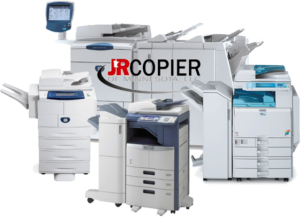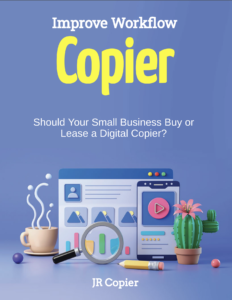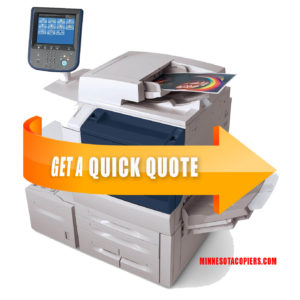The Real Cost of Printing
Despite it being a digital world we all still seem to need printers. There’s no shortage of them, but due to the way they’re sold, finding a good deal can be a bit of a challenge. The way to find the right printer for you, and one that won’t cost you a ton to run, is to think about how you’re going to use it.
What do you use it for?
The best way to determine the printer for you is to look at how you’re going to use the printer. By that I largely mean two things: how much will you be printing and what sort of things will you be printing?Printer choice basically comes down to inkjet or laser (there are things like solid ink printers too, but they’re mainly limited to bigger machines and if you see LED it’s the same as a laser). Inkjets are generally cheaper to buy up front, but will cost you more over time/prints, while lasers require a higher initial investment but pay back the longer you keep them.To determine which best suits your needs, first think about what you’re going to want to print, especially if you’re going to print color. Next you need to look at print volume, how much are you going to be printing? Not just on a weekly basis, but also in batches.For example, if you’re only going to print once a week, but you’re going to print 100 pages, you’re probably better off with a laser as the inkjet (despite massive speed improvements) will be slower, unless you’re prepared to be patient. Largely it comes down to higher volumes mean laser, lower volumes mean inkjet. Personally, I’d recommend a laser if you’re not doing much or any color printing regardless.
Cost per page, the hidden cost of printing
We’ve all seen the deals on printers, where you can buy them for seemingly cheaper and cheaper prices. Likewise we’ve all seen the price of ink/toner, with the cost of replacements sometimes being higher than the price of the printer. Printers at the bottom end of the price scale are going to cost you more to run. It’s a bit like razors, they’ll give you the handle for cheap and then sting you for every blade.That’s fine if all you’re going to be doing is a tiny amount of printing. Inkjets are going to be the cheapest option, but as cartridges dry out and print heads needs to be cleaned if you leave them, you may find they stop working before you’ve printed anywhere near their stated page capacity. Lasers tend to suffer this much less.It’s worth noting that page capacity (the number of pages they quote it’ll print) is generally based on 5% coverage of a page. That’s fine if you’re printing text, but if you do a lot of photo printing you’re going to find the quantity seriously reduced.So when you’re selecting a printer, have a look at the cartridges or toner it takes and check out the available options (some will have high capacity versions available that usually offer better value for money) and see how many pages they’ll cover. A typical inkjet cartridge will only do a couple of hundred, a laser toner generally does a few thousand, so while they appear much more expensive, factor in buying ten inkjet cartridges to one laser toner and then do the comparison.Even when you decide on the type of printer you’ll still have a range of options and prices. You could just go for the cheapest, but if you’re doing higher volumes you’ll generally find it’s better to spend more on the hardware to get higher capacity toner as it’ll pay off as you print. For example: you could buy an inkjet for $30 where the cartridges are $10 for 300 pages. Compare that to a laser that costs $150 and the toner $60 for 5,000 pages. It looks obvious the inkjet is cheaper, but to print 5,000 pages on the inkjet will cost you nearly $200 all-in. It still wins, but not by much and over the next 5,000 prints the laser will pay back.It’s worth checking the options on any model you’re reviewing to see what the consumable options are and the capacities of any cartridges/toner.
Other hidden costsA couple of things to watch out for when it comes to inkjets, especially photo quality ones, is the number of cartridges. A lot of inkjets use a combined color cartridge, the issue with these is that if one color runs out it’ll need replacing even if there’s ink still left in the other two. Photo printers tend to go the other way though, and you’ll find that instead of buying two or four colors, you’re buying six or eight and it won’t print when even one is empty. And don’t think printing black and white doesn’t mean it won’t use color, some still will.For lasers, the hidden extras are things like separate fuser units, drums and maintenance kits. These are separate parts with their own page counts. Not all machines have them as separate items or require them, so you may need to do a little digging (again, check the consumable options, they’re usually listed if relevant). You’ll need to factor replacing these into the page costs rather than just dividing the toner by the number of stated pages it covers.
Money saving options and features
More and more printers are coming with ‘eco’ features that the manufacturers tell you will help save the environment, but they can also help save you money. Some will have convenient eco buttons or settings and options typically include things like draft quality printing, which will mean you’ll get more pages from your ink.Unless you plan to send your document somewhere official, or keep it for posterity (the ink tends to fade on draft copies faster), then letting the machine default to this can save you a lot of money (by squeezing up to 30% more from your cartridge/toner).If you’re only printing for your own benefit (and sometimes even when you’re not) you may find duplex printing a great option. More and more machines are coming with duplex printing built in (another reason for picking more expensive machines), allowing you to print on both sides of the paper. It won’t save you ink, but it will save a sheet of paper and that can add up if you do a lot of printing when paper costs anywhere from 0.5p to 1p (or more) per page (even at 0.5p per page, 1,000 pages costs $50).Another option that’s readily available is shrinking pages to fit more than one page onto a single side, usually two is the limit if you still want to be able to read it, but you can also combine this was duplex printing. The pages are usually still perfectly readable and again, you halve the size of your paper requirements.
Don’t forget the paper
Something else people forget is the paper you’re printing on. Again, shopping around can save you a lot on a ream, which can cost anywhere from $1.99 to $5 or more for 500 pages of standard 80 gsm white paper. Buying a bulk pack and going for unbranded paper can help drive the cost down and I’ve never had a problem with quality or feed issues with cheaper paper (though if it’s for business use it might be worth spending a little more or keeping some better quality stuff around).It’s sometimes hard to work out your cost per print, especially if you’re doing full page prints as the cartridge print quantities are based on 5% coverage. Once you’ve been through a typical run you may have a better idea and with the falling cost of buying prints online (plus the better quality) you may find that’s a cheaper option, certainly for color.
Conclusion
Selecting a printer is far from a straightforward process, with many options to weight, not just in type and manufacturer, but also what will suit your needs. Printers ranges often vary wildly in prices, but I’ve found that going for the cheapest option up front will normally cost you over time, so it’s important to weigh you options and think about your requirements. While it’s often cheaper to buy a printer and simple replace it when it runs out of ink, few of us actually do and that’s what the manufacturers bet on.Keep an eye on the features you get as some can help save you serious money and simple things like setting the printer to default to draft mode and back and white can really help lower your costs. It’s all about being armed with the right knowledge and if you bear this in mind it should stand you in good stead.
[hero_unit title=”Try it in your office, before you buy or rent! • Free delivery & Set up” btn_style=”default” btn_size=”normal” target=”_self”] [button text=”Try it today!” link=”https://minnesotacopiers.com/contacts/” style=”info” size=”normal” target=”_top” display=”inline” icon=”user”]


